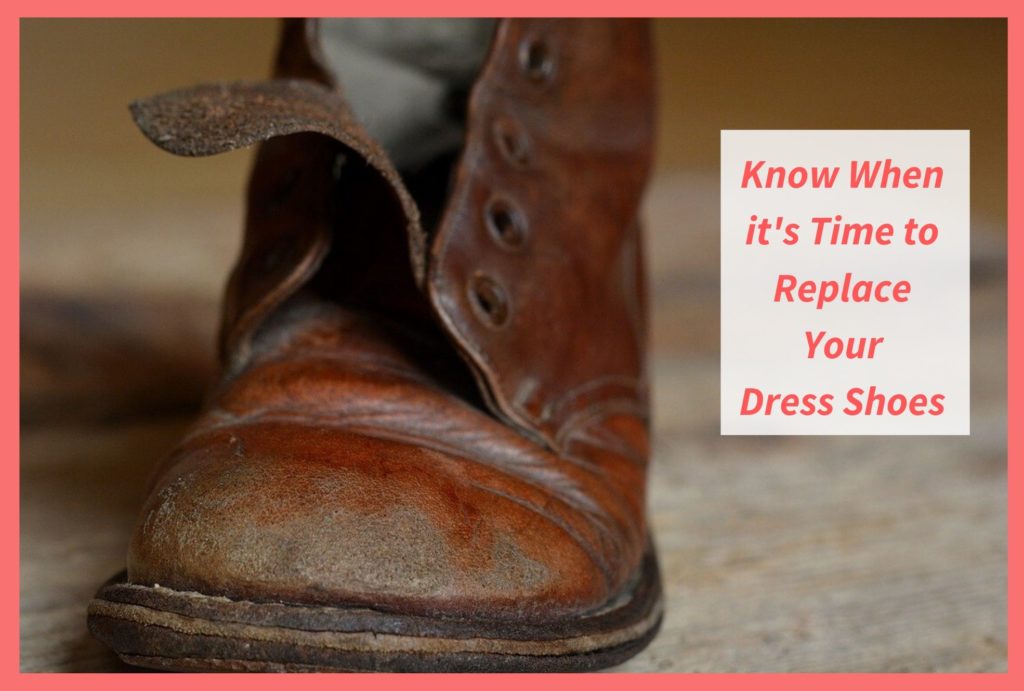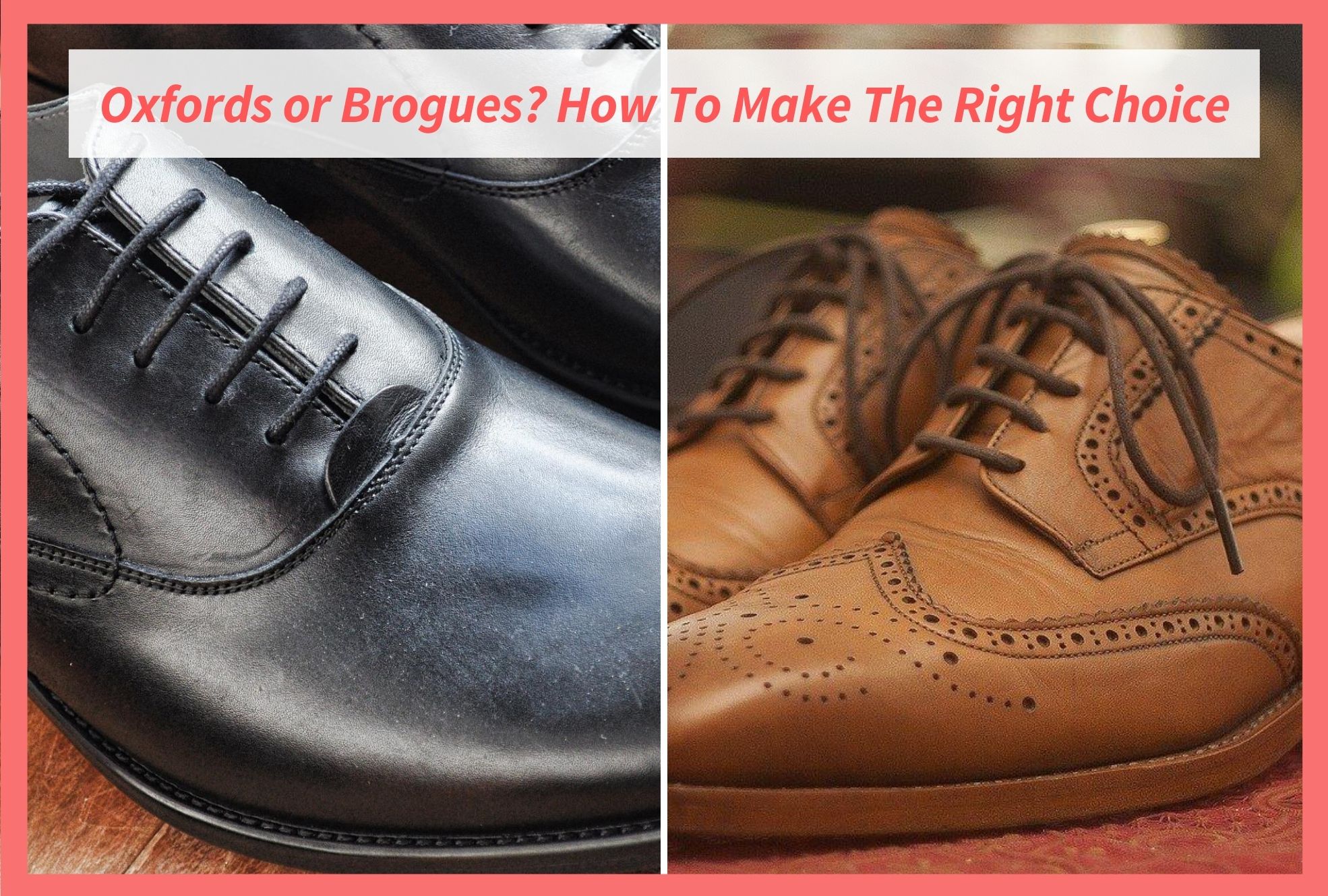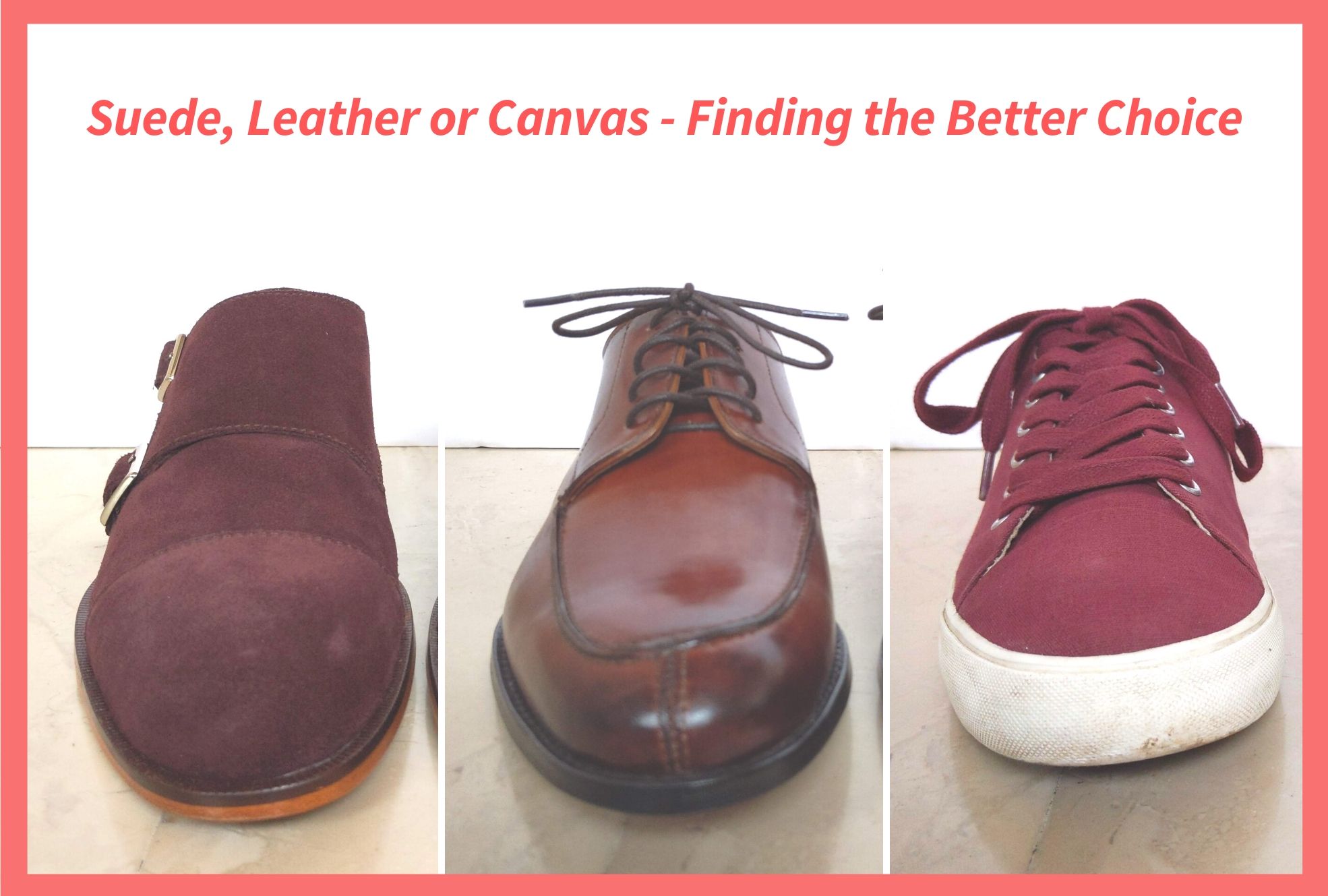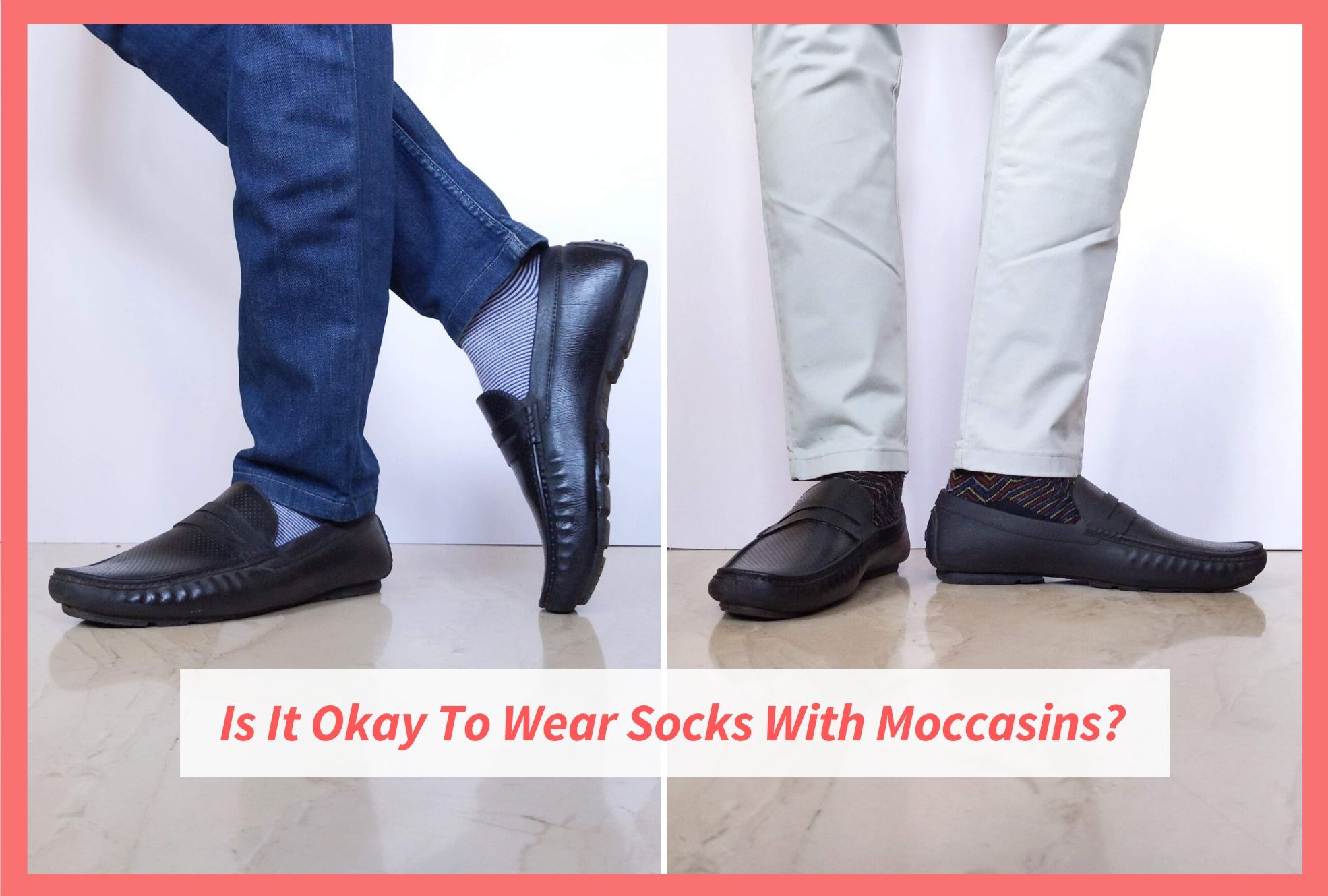
The end of 2019 is almost here. Every December, I have a habit of cleaning up around the house to ensure that everything is nice and tidy for the new year. And so the past weekend had me reaching out to the untouched recesses of my closet – to clean and reorganize. The hunt was mostly dull, but I did find out an old favourite pair of battered faux leather loafers. It was strange to see the shoes still lying around, but it was more interesting to remember the sequence of events that made me discard them from use. So here I am, one week later, researching and writing down this handy guide to understand when a pair dress shoes have reached the end of its life and must be replaced
You should replace your dress shoes when they are too damaged to be of any functional use to you. This means that the leather on the upper has cracked beyond repair, or the soles have worn out. In some cases, it is possible to get the shoes resoled thereby extending their use. Each shoe is different, so it is difficult to state the exact amount of time a pair of shoes will last. The overall shelf life of dress shoes will depend on a number of factors such as their quality, frequency of wear, weather, shoe care and many more. But there are rough estimates you can make and know if it is time to change those shoes
This article will describe the most common reasons for shoe wear and tear, along with a very general comparison of shoe price vs shoe life. You should then be able to read the signs and know when to replace your dress shoes
Common Reasons for Shoe Wear and Tear:
As mentioned, there are many factors that affect dress shoe life. These are just some of them that are most common –
Frequency and length of use:
Frequency and length of shoe wear can provide the easiest estimate of shoe wear and tear. The longer you’ve worn dress shoes, the more chances they have of wearing out. This goes hand in hand with the frequency of use because ideally, you shouldn’t wear the same pair of shoes every day. Leather needs time to dry after a day’s wear – if you’re using the same shoe every day that doesn’t happen – which can accelerate their normal aging process and decrease their life
Walking surface
The surface you walk on while wearing shoes also impacts its life. A dress shoe that you wear just in the office will obviously last longer because the only surfaces those shoes come in contact with are the lush soft carpets and smooth tiles at your workplace. Now if you wore the same shoes to commute as well, the friction with the rough roads and pavements is sure to wear them out faster.
That doesn’t mean that I advocate keeping separate shoes for the office. These points are simply to make you understand the factors better, and you can then decide for yourself. I personally wear the same shoes for commute and office; the only time of the year they are separate is during the monsoon when I don’t want my nice shoes to get wet.
Weather
Talking about the monsoon, you cannot deny the effect the weather has on a pair of shoes. Be it rain or snow, prolonged exposure to the elements is going to have an impact on the shoe.
Water does not actually damage leather, but rather makes it vulnerable and easy to get damaged if not properly treated afterward. Every time your shoe faces rain, the oils get washed off the leather (it is animal skin after all!) and this can cause the leather surface to harden and crack. Fungal growth is also a real issue if the shoes are not allowed to completely dry off
While leather naturally can handle rainwater, snow is different. The road salts that are added to the snow to make them melt faster, can actually dissolve into your leather shoes leaving stains. Over time the salt can also dry the leather and cause it to crack
But what if you’re caught in the middle of harsh weather after work with no alternative shoes? You mustn’t worry, your shoes can deal with it. Just remember to allow the shoes to dry naturally once you’re home, then give a generous coat of shoe conditioner and polish
Shoe care
Just like your skin, leather requires regular care to stay healthy. Shoe shining and polishing can help condition the leather and extend its life. On the other hand, *lack* of proper shoe care will make your dress shoes look lifeless very soon. You do not need a rigorous care routine, a basic shine using cream polishes can work too.
Shoe care also extends to accessories like shoe trees and shoe horns. Not using these can cause make it difficult for your dress shoes to recover from the creasing and pressure they go through during the day
Walking style
Everybody walks differently – some strike the heel on the ground first whereas some strike the forefoot or midfoot; some people overpronate while others might supinate. It is natural that this will play some role in the wear and tear of shoe trees. Depending on your walking style, the area of the outsoles which come in contact with the ground the most will wear out first. This means that eventually these parts will thin out and lead to an imbalance in the support that the shoe provides.
Do expensive shoes last longer?
Most of them, yes. All of them, no!
The cost of a pair of leather shoes is generally dependent on its quality. High-quality footwear will be made out of high-quality leather, with proper checks at each stage of its construction. Only the finest raw materials would be used which will bump up the cost of the shoe. Simply put, a high price tells you that care has been taken to make that shoe. And this care finally translates to a pair of shoes that not only age beautifully but are also more resistant to daily wear and tear.
On the flip side, inexpensive shoes have been manufactured to satisfy market demand. They are not meant to last, and the low cost usually indicates the use of cost-effective and profitable raw materials over quality ones.
But there is indeed an exception to the higher price = better quality assumption – Designer brands. Shoes from such huge brands might be expensive, but they are also likely to use low quality leather and construction methods like cementing. They are usually focussed on design rather than quality
It’s Time To Replace Your Dress Shoes When:
1) The soles have worn out and cannot be replaced
High-quality dress shoes can last a long time if they’re properly taken care of. However, despite the effort you put in shoe care, the soles of dress shoes will wear out sooner or later.
When this happens, you have to consider if the existing soles can be removed from the shoe and new ones attached:
- Cemented soles will be difficult to replace. If you have such shoes then I’m afraid your only option at this point is to get rid of those shoes and buy new ones instead. You can also continue to wear them, but the continuous loss of support due to worn out soles can cause serious problems, knee and heel pains in the future
- Dress shoes that are Blake stitched or Goodyear Welted can be re-soled by a skilled and reputable cobbler. You can first reach out to the brand that manufactured your shoes – many brands provide resoling and refurbishing services that can help with this. They’ll have the best idea about their own shoes, so you can be assured that your precious dress shoes are in safe and professional hands
So, if the outsoles of your dress shoes are damaged beyond replacement, you will have to replace them. But there are some signs you can look for to track the wear of shoe soles. Use these to know when to resole your shoes
Signs Your Dress Shoes Need Resoling:
- SPONGY SOLE :
If the soles start to get soft, this might be a sign that they need to be changed. You can assess this by pressing the thumb against the center of the sole. If you can easily press into it and it feels spongy, it needs to be replaced
Another sign is the circular patterns forming on the sole i.e. the beginning of a hole. At this point, you should definitely consider resoling so that the damage can be controlled - UNEVEN THINNING OF THE SOLE :
This relates to the contribution of walking style towards the overall aging of a shoe. If your feet tend to fall inwards while walking (overpronation), the inner part of the soles will start to thin faster than the rest of sole. And the opposite would happen if your feet fall outwards (supination) – the outer areas of the soles will thin out.
Because of this uneven thinning of the sole, the shoes lose support in the areas where you need it the most and so must be replaced - SPLITTING OF THE SOLE :
People don’t usually keep a track of the bottom of their shoes, but they look at it from the top every time they wear them. So sole splitting will be very easily noticed when it happens. It is time to resole your shoes if the soles start to split away from the uppers. This can get worse if you don’t tend to it; better to start looking for replacements the first time you observe this - HOLE IN THE SOLE :
If a hole has formed in the bottom of the shoe – you should get it replaced immediately. It might have reached a point where resoling is not possible anymore, but you can at least try.
2) The leather uppers have damaged beyond repair
Damage to the shoe uppers is the second factor that can fast forward your dress shoes to the end of their life. Most of the points discussed in the first half of this post – wearing the same pair of shoes every day, exposure to rain or snow, and lack of proper shoe care – these can all in combination cause the uppers to harden over time and crack in places where the shoes bend. As the cracks deepen, restoring the leather becomes increasingly difficult so it might be better to replace the shoes.
In addition, not using shoe horn while putting on shoes can break down the heel counter over time. Soft heel counters mean less support – and this just adds on to the factors that can render a dress shoe useless
Apart from the natural wear and tear, there can also be accidental damages to the shoe that are out of your control. Commuting to and from work in nice dress shoes, my biggest fear is somebody in the crowd stepping on them. It has already happened to me a few times, but I’ve been able to remedy it so far. But if something ever happens to them (I sure hope not!) that is difficult to recover from or at least hide – it’ll be time to make the decision of tossing them
Summary
All of us would like to extend the life of our nice dress shoes for as long as possible, but there will be times they would need to be replaced. Daily wear and tear contribute towards the aging of the shoes, and it is important to understand the various factors that affect it to then care for your shoes the best you could. And yes, high priced shoes will usually last longer – because the price is a measure of the quality and construction. There will always be exceptions though; you can read our handy guide to asses the quality of a pair of leather dress shoes.
No matter what shoes you buy, you should replace them once the soles have totally worn out, or the leather upper is damaged beyond repair. Goodyear Welted and Blake Stitched shoes can be resoled, provided you notice and act at the right time. This will easily add many more years to the life of your dress shoes. The leather upper can last much longer than the soles, so make sure to follow regular shoe care. But when it’s time for your shoes to leave, don’t be sad! Thank your leather babies for all their precious service, and bid them goodbye 🙂
Do you have any pair of shoes you’re looking to replace? Let me know!




